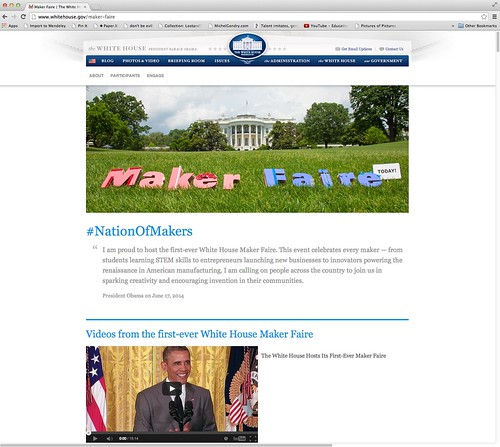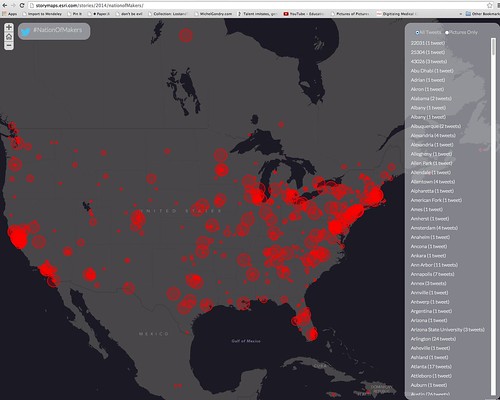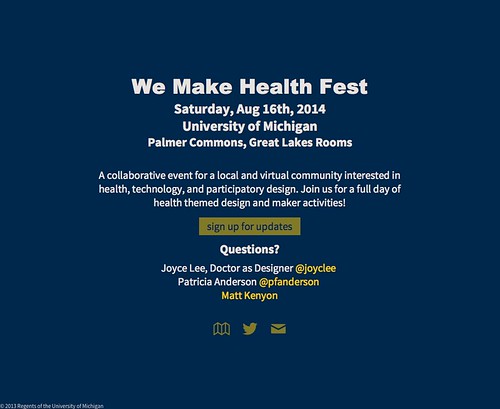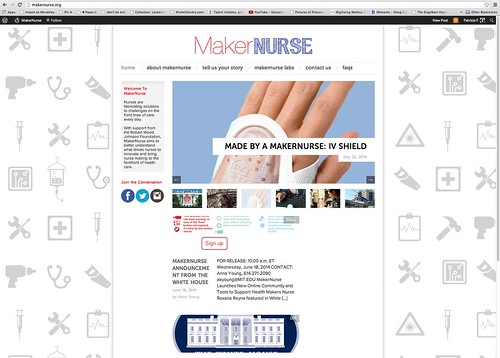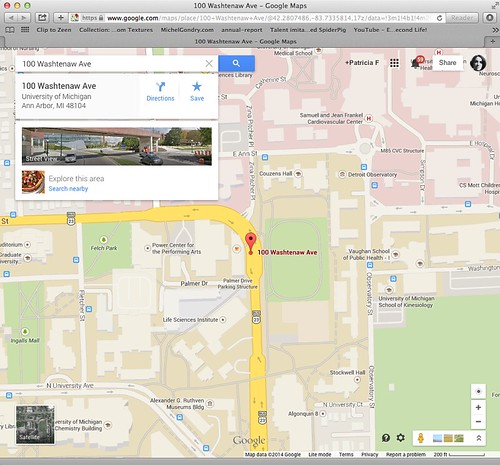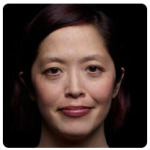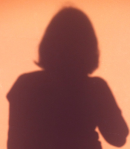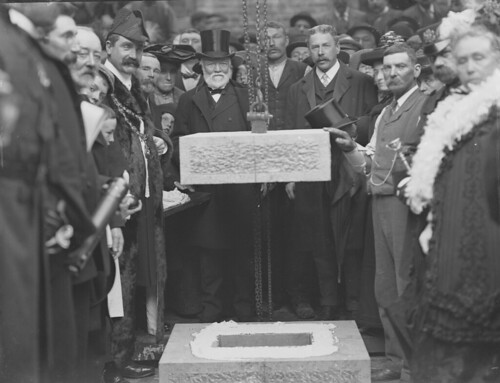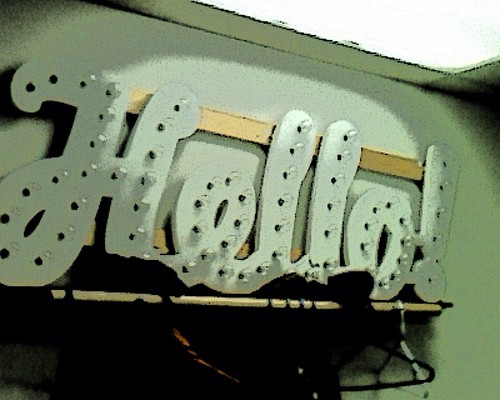
In yesterday’s Part One post, I left this with me trying to decide what ideas were most important to show Barbara Stripling. I had drafted a looooong blogpost on April 15th, and showed it to my friend and colleague, Kate Saylor on April 16th. Kate and I were digging around in the post, and the question came up of looking at health maker faires. I didn’t think there had been one. The conversation went something like this.
“Really?”
“Really.”
“Hmmm, that’s odd.”
“Let’s look.”
“Good idea. If anyone can find it, you can.”
“OMG, I can’t find any! Look! There are ones on sustainability, and green living, and one which include health booths, but I can’t find ANY actually themed around health!”
“REALLY?!”
“We have to do this.”
“We TOTALLY have to do this.”
“WOW.” “WOW.“
The next person called was Emily Puckett Rogers, another librarian who is one of the leaders behind the Ann Arbor Mini-Maker Faire. She had a LOT of good ideas and information. We brainstormed a while, and then the next step was to start talking with other people to get more ideas. The following day, April 17th, I started a shared spreadsheet in Google Drive for folk to share ideas and collect them in one place. Word spread across campus like wildfire, and many people were making edits. The first week I kept the doc open and just kept watching in astonishment as people across campus kept logging in and out of the file.
April 18th I had a meeting with Joyce Lee about another mutual project. As we walked out of the meeting, I was telling her about this idea. Her reaction was along the lines of, “Isn’t this what we are trying to do? We should do this! We should sponsor this!” And we were off and running.
We started out brainstorming what sort of topics were a good fit for a health maker fair or festival. Oh, there are plenty, and for almost all of them someone would know of a local person doing work with that tech. At this point what I wanted to do was prove the viability of the concept by taking things I’d seen from maker fairs I’d attended and sifting out those with any kind of health relevance. I tried to distill those examples down into a few categories with just a few examples each, but leaving enough conceptual wiggle room to imply some of the other possibilities. The framework I came up with (yes, I know, I’m the acronym queen) is CLASP.
CLASP
* Creativity
* Literacy
* Access
* Sustainability
* Personal Problemsolving
The core ideas contained in CLASP apply to all makerspaces, not just the health aspects. There is also a lot of overlap in the ideas themselves. Typically, each example will include all the concepts. I’m just using this as a tool to help me organize and prioritize the examples I’ve collected.
CREATIVITY


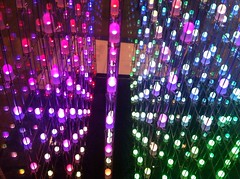
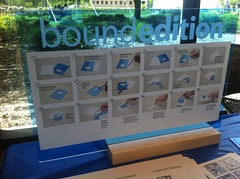
One of the things I adore about the Maker Movement is the way people come up with their own solutions to their own problems, as individuals and as a community, through exploration, innovation, experimentation, and creation. Patient communities have been doing the same sort of thing — sharing problems and solutions, brainstorming, turning solutions into marketable products, and more. I’ve been deeply inspired and impressed with the prosthetic solutions coming from 3D printing, from Robohand & Roboleg to the beautiful prosthetic limbs (see the work done by Sophie de Oliveira and Scott Summit).
Closer to home, many people with injuries or conditions that effect mobility find themselves struggling to get in and out of clothes on their own, something that happened to me last year with my shoulder injury. The solutions can be unique to an individual, based on range of motion, grip strength, fine motor control, and other factors. Resources like sewing machines, CAD/CAM tools for modeling, and sergers can be critical to those solutions. Other persons may find healing through something as simple as a beautiful work of art, and the lights and wooden star shown here can be mentally soothing, stimulating, engaging, calming, or a source of meditation and focus. The idea of book binding connects to health, for me, as I encourage patients with a new diagnosis or long-term condition to keep their own notebook about their symptoms, treatments, meetings with providers, questions asked, answers given, etcetera. Being able to customize and personalize your own book makes it more meaningful. I don’t know, maybe this is overkill, or maybe it is the start of a great idea.
LITERACY
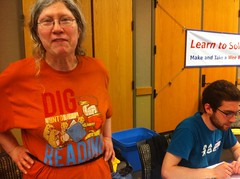
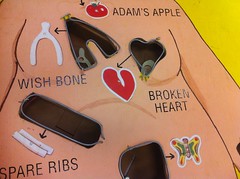
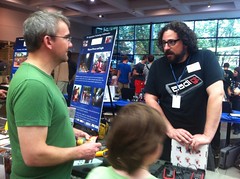

I’ve never been to a maker faire where I didn’t encounter a librarian. Literacy is a big deal for librarians, and health literacy is a big deal in health care. Your standard health fair is focused around health literacy — communicating the basics around important health topics and common conditions, as well as best practices for prevention. But most of the interaction is one-sided. Health fair attendees pick up fliers and sometimes ask questions, but it isn’t literacy in the way that maker faires handle it. In maker faires, literacy isn’t just “what is it” and “let me tell you what to do.” Literacy becomes “how can I do this myself” and “what skills do I need to take this to the next level” and “what is possible if I [fill in the blank].” Literacy includes playing games to actively engage with a topic as well as building things and identifying what you need to know to achieve your own goals.
In these images, there is a librarian wearing a “Dig into reading” tshirt while she assists at a booth teaching soldering skills; a larger than lifesize version of the Operation board game which can be used to teach hand-eye coordination as well as humorously presented anatomical concepts; another librarian connecting gaming to science and technology fundamentals; and a young scientist showing science products and presenting science literacy concepts. You can’t see it in this picture, but in another image, the same young scientist shows off 3d printed laboratory equipment.
ACCESS
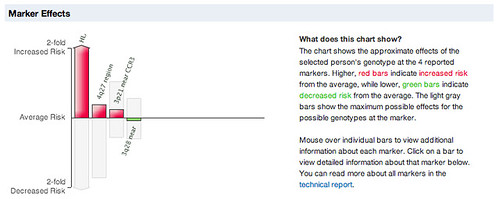
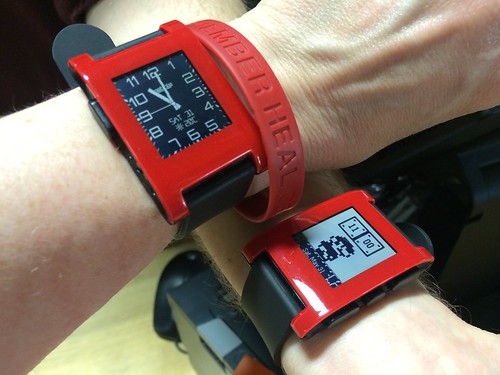
In libraries we tend to think of access to information (ie. books and journals) first and foremost. Next we think of access to the buildings, and accessible design. With online information, we think of web accessibility. When we talk about the digital divide we mean access to certain types of technology and networking. With makerspaces we think of access to completely different types of technology. Somewhere along the line we usually mention the skills needed to use these things, but I’m not sure that skills are considered part of the challenge of access. I’m thinking the question of access may be bigger than any of these, and in healthcare, there may be portions of access that are broader and/or narrower than what we usually consider.
The first image above is a snippet from one of my 23andMe health reports. Yeah, the ones that the FDA has told them not to do anymore. Luckily, I got in before that happened. This is just a tiny part of an idea. What’s important isn’t just access to personalized genomics information, or to 23andMe, or even to the health reports. What’s important is a bigger challenge — that the increasing demands on the healthcare system are driving more engagement by and with patients, and there are needs and demands for a very type of information than has usually been made available about health for people who are not medical professionals. There is a need for access to tools and skills that have traditionally fallen outside the purview of the patient.
The second image is of Pebble watches, a wearable technology tool that connects to smart phones and sensors and can be used for games and utility, but also for personal health management. The Maker Movement philosophy has come to healthcare in a HUGE way, and shows no signs of going away. Not only does healthcare need to acknowledge and accept this, but also needs to support, provide access to skills and training, create tools for integrating personal data with electronic health records, and beyond. There are ‘new’ buzzwords giving a glimpse into some of what we could be doing and what might fit into healthcare makerspaces and healthcare maker faires. Here are just a few.
Participatory medicine
individualized medicine
personalized medicine
personal genomics
quantified self
self-trackers
n=1 studies
DIY biology
biohacking
microbiomics
sensors
wearable technology
I don’t know about you, but my brain is going, “Whoa.” How on earth has this not already happened in a HUGE way?
SUSTAINABILITY


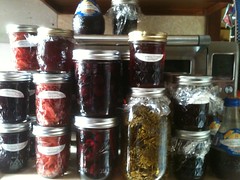
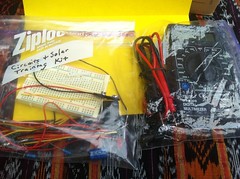
Hang around with folk in public health for any length of time at all and you start hearing about diet management, outreach, food deserts, community health, environmental health, risk science, and related concepts. An awful lot of what happens in public health is trying to help people and communities develop better ways to create healthy places and lifestyles. This can be growing urban gardens, canning your own produce, putting in solar-powered energy cells, making your own sensors to detect air pollution, and much much more. This is a huge area for connecting what’s happening in maker communities with public health.
PERSONAL PROBLEMSOLVING
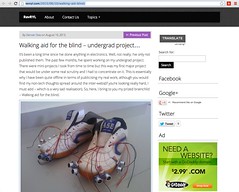
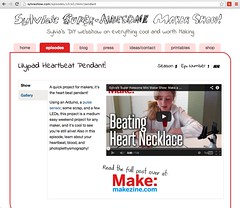
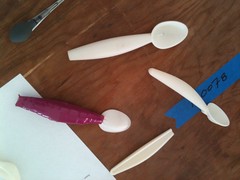
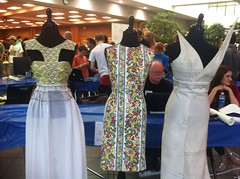
We all have problems, we all have challenges in our lives. People with chronic health conditions or caring for someone with a chronic health condition maybe have more, but we can all benefit from skills to help us identify problems, brainstorm possible solutions, and design ways to implement those solutions whether by ourselves or in collaboration with other talented folk. In the Maker Movement, there are a lot of examples of people helping other people to create solutions for both interesting and ordinary problems. Spoons that are easier to grip, glasses that don’t wobble when your hands shake, shoes that sense obstructions you can’t see and warn you, sensors as jewelry or tattoos to monitor your vital signs — these are all examples of creative solutions to personal problems, and there are a LOT more examples out there.
So, are you in? Want to help? When do we start?



